Angelica (Angelica archangelica)
Botanical Family: Apiacea or Umbelliferae (parsley family)
Extraction Method: Steam distilled from seed/root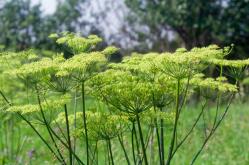
Key Constituents: Limonene (60-70%), Alpha Pinene (5-8%), Alpha and Beta Phellandrene (3-6%)
Historical Data: Known as the “holy spirit root” or the “oil of angels” by the Europeans, angelica’s healing powers were so strong that it was believed to be of divine origin. From the time of Paracelsus, it was credited with the ability to protect from the plague. The stems were chewed during the plague of 1660 to prevent infection. When burned, the seeds and roots were thought to purify the air.
Medical Properties: Anticoagulant, relaxant
USES: Throat/lung infections, indigestion, menstrual problems/PMS
Fragrant Influence: Assists in the release of pent-up negative feelings and restores memories to the point of origin before trauma or was experienced.
Application: Internal or as a dietary supplement: Dilute 1 part essential oil with 1 part V-6 Vegetable Oil Complex or other pure vegetable oil, put in a capsule, and take up to three times daily or as needed; (1) apply 1-2 drops on location, (2) apply on chakras and/or Vita Flex points, (3) inhale directly, (4) diffuse up to 30 minutes three time daily or as needed.
Avoid applying to skin that will be exposed to direct sunlight or UV light within 24 hours
Balsam Fir (Idaho) (Abies balsamea)
Botanical Family: Pinaceae (pine)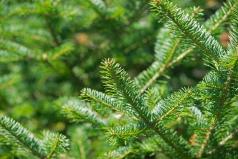
Plant Origin: Highland flats near Bonners Ferry Idaho
Extraction Method: Steam distilled from leaves (needles) and branches
Key Constituents: Alpha Pinene (28-49%), Beta Pinene ( 14-24%),
Camphene (13-20%), Limonene ( 13-20%)
ORAC: 20,500 mTE/100g
Historical Data: The fir tree – a tree commonly used as a Cristmas tree today – has been prized through the ages for its medicinal effects and ability to heal respiratory conditions and muscular and rheumatic pain.
Medical Properties: Anticoagulant, anti-inflammatory
USES: Throat/lung/sinu infections, fatigue, arthritis/rheumatism, urinary tract infections, scoliosis/lumbago/sciatica
Fragrant Influence: Grounding, stimulating to the mind, and relaxing to the body.
Application: Dilute 1 part essential oil with V-6 Vegetable Oil Complex or other pure vegetable oil; (1) apply 2-4 drops on location or use neat in Raindrop Technique, (2) apply on chakras and/or Vita Flex points , (3) inhale directly, (4) diffuse, or (5) take as dietary supplement.
Basil (Ocimum basilicum)
Botanical Family: Lamiacea or Labiatae (mint)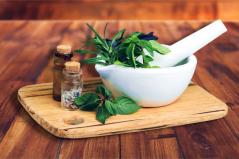
Plant Origin: India, Utah, France
Extraction Method: Steam distilled from leaves, stems, and flowers
Key Constituents: Methylchavicol (estragol) (40-80%), Linalol (10-50%), 1,8-Ceneole (1-7%), Eugenol (1-10%)
ORAC: 54,000 mTE/100g
Historical Data: Used extensively in traditional Asian Indian medicine, basil’s name is derived from “basileum”, the Greek name for king. In the 16 century, the powered leaves were inhaled to treat migraines and chest infections. The Hindu people put basil springs on the chests of the dead to protect them from evil spirits. Italian women wore basil to attract possible suitors. It was listed in Hildegard’s Medicine, a compilation of early German medicines by highly regarded Benedictine herbalist Hildegard of Bingen (1098-1179)
Medical Properties: Powerful antispasmodic, antiviral, antibacterial, anti-inflammatory, muscle relaxant
USES: Migraines, throat/lung infections, insect bites.
Fragrant Influence: Fights mental fatigue.
Application: Dietary supplement; Dilute 1 part essential oils with 4 parts V-6 Vegetable Oil Complex or other pure vegetable oil; (1) apply 2-4 drops on location, temples, neck, (2) apply on chakras and /or Vita Flex points (crown of head, forehead, heart, and navel), (3) inhale directly, (4) diffuse, or (5) take as dietary supplement.
Bergamot (Citrus bergamia)
Botanical Family: Rutaceae (citrus)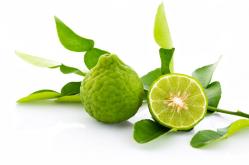
Plant Origin: Italy, Morocco
Extraction Method: Cold pressed from the rind, rectified and void of terpenes. Also produced by solvent extraction or vacuum distillation.
Key Constituents: Limonene (30-45%), Linalyl Acetate (22-36%), Linalol (3-15%), Gamma-Terpinene (6-10%), Beta-Pinene(5.5-9.5%)
Historical Data: It is believed that Christopher Columbus brought bergamot to Bergamo in Northern Italy from the Canary Islands. A mainstay in traditional Italian medicine, bergamot has been used in the Middle East for hundreds of years for skin conditions associated with oily complexion. Bergamot is responsible for the distinctive flavor of the renowned Earl Grey Tea and was used in the first genuine eau de cologne.
Medical Properties: Calming, hormonal support, antibacterial, antidepressant
USES: Agitation depression, anxiety, intestinal parasites, insomnia, vital infections (Herpes , cold sores)
Fragrant Influence: Relieves anxiety; mood-lifting qualities
Applications: Dilute 1 part essential oil with 1 part V-6 Vegetable Oil Complex or other pure vegetable oil: (1) apply 1-2 drops on location, (2) apply on chakras and /or Vita Flex points, (3) inhale directly, (4) diffuse, or (5) take as dietary supplement.
Caution: Avoid applying to skin that will be exposed to sunlight or UV light within 36 hours.
Cardamom (Elettaria cardamomum)
Botanical Family: Zingiberaceae (ginger)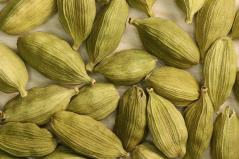
Plant Origin: Guatemala Sri Lanka
Extraction Method: Steam distilled from seeds
Key Constituents: Alpha Terpinyl Acetate (45-55%), 1,8-Cineole (Eucalyptol) (16-24%), Linalol (4-7%), Limonene (1-3%)
ORAC: 36,500 µTE/100g
Historical Data: Called “Grains of Paradise” since the Middle Ages, it has been used medicinally by Indian healers for millennia. One of the most prized spices in ancient Greece and Rome, cardamom was cultivated by the king of Babylon around the seventh century B.C. It is mentioned in one of the oldest known medical records, the Ebers Papyrus (dating from 16th century B.C.), an ancient Egyptian list of 877 prescriptions and recipes.
Medical Properties: Antispasmodic (neuromuscular), expectorant, antiparasitic (worms)
USES: Lung/sinus infection, indigestion, senility, headaches
Fragrant Influence: Uplifting, refreshing, and invigorating.
Applications: Dietary supplement; Dilute 1 part essential oils with 1 part V-6 Vegetable Oil Complex or other pure vegetable oil, put in a capsule, and take up to three times daily; (1) Topical: Dilute 1 part essential oil with 1 part V-6 Vegetable Oil Complex or other pure vegetable oil, apply on location, stomach, solar plexus, or thighs, (2) apply on chakras and /or Vita Flex points, (3) inhale directly, (4) diffuse up to 30 minutes three times daily, or (5) take 4 drops as dietary supplement.
Carrot Seed (Daucus carota)
Botanical Family: Apiaceae or Umbelliferae (parsley family)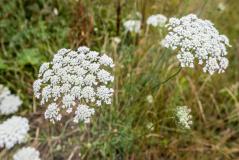
Plant Origin: France
Extraction Method: Steam distilled from dried seeds
Key Constituents: Carotol (30-40%), Alpha Pinene (12-16%), Trans Beta Caryophyllene (6-10%) Caryophyllene Oxide (3-5%)
Historical Data: Traditionally used for kidney and digestive disorders and to relieve liver congestion.
Medical Properties: Antiparasitic, antiseptic, depurative, diuretic, vasodilatory
USES: Skin conditions ( eczema, oily skin, psoriasis, winkles), water retention, liver problems.
Application: Dilute 1 part essential oil with 1 part V-6 Vegetable Oil Complex or other pure vegetable oil; (1) apply 1-2 drops on location, (2) apply on chakras and/or Vita Flex points, or (3) take as dietary supplement.
Found in: Animal Scents Ointment, GLF, Rose Ointment, Juva Cleanse.
Cedarwood (Cedrus antlantica)
Botanical Family: Pinaceae (pine)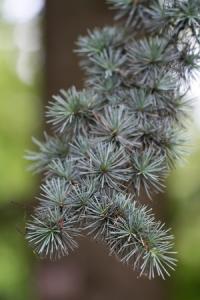
Plant Origin: Morocco, USA. Cedrus atlantica is the species most closely related to the biblical Cedars of Lebanon.
Extraction Method: Steam distilled from bark
Key Constituents: Alpha-Himachalene (10-20%), Beta-Himacahalene (35-55%), Gamma-Himachlene (8-15%), Delta-Cadinene (2-6%)
ORAC : 169,000 µ TE/100g
Historical Data: Throughout antiquity, cedarwood has been used in medicines. The Egyptians used it for embalming the dead. It was used as both a traditional medicine and incense in Tibet.
Medical Properties: Combats hair loss (alopecia areata), antibacterial, lymphatic stimulant.
USES: Hair loss, arteriosclerosis, ADHD, skin problems (acne, eczema)
Fragrant Influence: Stimulates the limbic region of the brain ( the center of emotions), stimulates the pineal gland, which releases melatonin. Terry Friedmann, MD, found in clinical tests that this oil was able to successfully treat ADD and ADHD (attention deficit disorders) in children. It is recognized for its calming, purifying properties.
Application: (1) Apply on location, (2) apply on chakras and/or Vita Flex points, (3) inhale directly, (4) diffuse, or (5) take as dietary supplement.
Found in: Australian Blue, Brain Power, Cel-Lite Maghic Massage Oil, Egyptian Gold, Grounding, Highest Potential, Inspiration, Into the Future, Kidscents, Bath Gel, Kid scents Lotion, Peppermint-Cedarwood Bar Soap, Sacred Mountain, Sacred Mountain Bar Soap, SARA.
Celery Seed (Apium graveolens)
Botanical Family: Apiaceae or Umbelliferae (parsley family)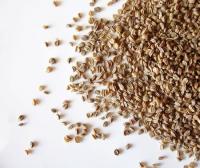
Plant Origin: Europe
Extraction Method: Steam distilled from dried seeds.
Key Constituents: Limonene (60-75%), Alpha and Beta Selinene (14-20%), Sednenolide (4-7%)
ORAC: 30,300µTE/100g
Historical Data: Long recognized as helpful in digestion, liver cleansing and urinary tract support. Also said to increase milk flow in nursing mothers.
Medical Properties: Antibacterial, antioxidant, antirheumatic, digestive aid, diuretic, liver protectant.
USES: it is beneficial to use for Arthritis/rheumatism, digestive problems, liver problems/hepatitis
Application: It can be used as a Dietary Supplement: Dilute 1 part essential oil with 2 parts V-6 Vegetable Oil Complex or other pure vegetable oil, put in a capsule, and take up to three times daily
Found in: GLF, Juva Cleanse
Chamomile, German ( Matricaria recutita)
Botanical Family: Asteraceae or Compositae (daisy)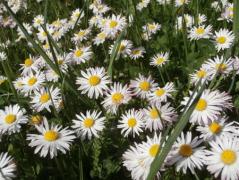
Plant Origin: Utah, Idaho, Egypt, Hungary
Extraction Method: Steam distilled from flowers
Key Constituents: Chamazulene (2-5%), Bisabolol Oxide A ( 32-42%), Trans-Beta-Farnesene (18-26%), Bisbolol Oxide B (3-6%), Bisbolone Oxide A (3-6%), Cis Spiro Ether (4-8%)
ORAC: 218, 600µTE100g
Historical Data: Listed in Dioscorides’ De Materia Medica (A.D. 78),Europe’s first authoritive guide to medicines, which became the standard reference work for herbal treatments for over 1,700 years.
Medical Properties: Powerful antioxidant (inhibits lipid peroxidation), antitumorol, anti-inflammatory, relaxant, anesthetic. Promotes digestion, liver and gallbladder health.
USES: Hepatitis/fatty liver, arteriosclerosis, insomnia, nervous tension, arthritis, carpal tunnel syndrome, skin problems (acne, eczema, scar tissue).
Fragrant Influence: Dispels anger, stabilizes emotions, and helps release emotions linked to the past. Soothers and clears the mind.
Application: It can be used as Dietary Supplement: Put 2 drops in a capsule, take three times daily or as needed: apply 2-4 drops on location, (2) apply on chakras and/or Vita Flex points, (3) inhale directly, (4) diffuse up to 1 hour three times daily, or (5) take as dietary supplement.
Found in: A.R.T Day Activator, A.R.T Night Reconstructor, ComfortTone, EndoFlex, JuvaTone, Surrender.
Chamomile, Roman (Chamaemelum nobile)
Botanical Family: Asteraceae or Compositae (daisy)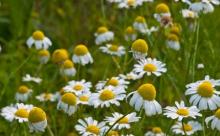
Plant Origin: Utah, France
Extraction Method: Steam distilled from flowering top.
Key Constituents: Isobutyl Angelate+Isamyl; Methacrylate (30-45%); Isoamyl Angelate (12-22%); Methyl Allyl Angelate (6-10%); Isobutyl n-butyrate (2-9%)2-Methyl Butyl Angelate (3-7%).
ORAC: 240 µTE/100g
Historical Data: Used in Europe for skin regeneration. For centuries, mothers have used chamomile to calm crying children, combat digestive and liver ailments, and relieve toothaches.
Medical Properties: Relaxant, antispasmodic, anti-inflammatory, antiparasitic, nerve regenerative, anesthetic, detoxifies blood and liver.
USES: Relieves restlessness, anxiety, ADHD, depression, insomnia, skin conditions (acne, dermatitis, eczema)
Fragrant Influence: Because it is calming and relaxing, it can combat depression, insomnia, and stress. It minimizes anxiety, irritability, and nervousness. It may also dispel anger, stabilize the emotions, and help to release emotions that are linked to the past.
Application: (1) Apply 2-4 drops on location, ankles, or wrists, (2) apply on chakras and/or Vita Flex points, (3) inhale directly, (4) diffuse, or (5) take as dietary supplement;
Found in: Awaken, Clarity, Dragon Time Bath & Shower Gel, Forgiveness, Genesis Hand & Body Lotion, Gentle Baby, Harmony, Joy, Juva Flex, K&B, Kidscents Tender Tush, Motivation, M-Grain, Rehemogen, Surrender, Wolfberry Eye Cream.
Cinnamon Bark (Cinnamomum verum)
Botanical Family: Lauraceae (laurel)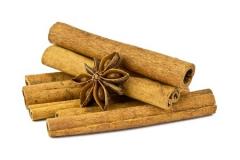
Plant Origin: Sri Lanka, Madagascar, Ceylon
Extraction Method: Steam distilled from bark
Key Constituents: Trans-Cinnamaldehyde (40-50%), Eugenol (20-30%), Beta-Caryophyllene (3-8%), Linalol (3-7%)
ORAC: 10,340 mTE/100g
Historical Data: Listed in Dioscorides’ De Materia Medica (A.D. 78), Europe’s first authoritive guide to medicines, which became the standard reference work for herbal treatments for over 1,700 years.
Cinnamon was reputed to be part of the “Marseilles Vinegar” or “ Four Thieves Vinergar” used by grave-robbing bandits to protect themselves during the 15th century plague.
Medical Properties: Anti-inflammatory (COX-2 inhibitor), powerfully antibacterial, antiviral, antifungal, anticoagulant, circulatory stimulant, stomach protectant (ulcers), antiparasitic (worms)
USES: Cardiovascular disease, infectious diseases, viral infections (Herpes, etc.), digestive complaints, ulcers, and warts
Fragrant Influence: Thought to attract wealth
Application: : Dilute 1 part essential oil with 4 parts V-6 Vegetable Oil Complex or other pure vegetable oil; (1) apply 1-2 drops on location, (2) apply on chakras and/or Vita Flex points, (3) diffuse, or (4)take as dietary supplement.
Caution: May irritate the nasal membranes if inhale directly from diffuser or bottle.
Found in: Abundance, Carbozyme, Christmas Spirit, Egyptian Gold, Exodus II, Highest Potential, Thieves.
Coriander (Coriandrum sativum)
Botanical Family: Apiaceae or Umbelliferae (parsley)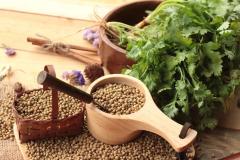
Plant Origin: Russia
Extraction Method: Steam distilled from seeds (fruit)
Key Constituents: Linalol (65-78%), Alpha-Pinene (3-7%), Camphor (4-6%), Gamma-Terpinene (2-7%), Limonene (2-5%), Geranyl Acetate (1-3.5%), Geraniol (0o.5-3%)
ORAC: 298,300 mTE/100g
Historical Data: Coriander seeds were found in the ancient Egyptian tomb of Ramses (II). This oil has been researched at Cairo University for its effects in lowering glucose and insulin levels and supporting pancreatic function. It has also been studied for its effects in strengthening the pancreas.
Medical Properties: Anti-inflammatory, sedative, analgesic
USES: Diabetes, arthritis, intestinal problems
Fragrant Influence: Soothing and calming
Application: Dilute 1 part essential oil with 1 part V-6 Vegetable Oil Complex or other pure vegetable oil; (1) apply 2-4 drops on location, (2) apply on chakras and/or Vita Flex points (3) inhale directly, (4) diffuse, or (5) take as dietary supplement
Found in: Longevity
Dill ( Anethum graveolens)
Botanical Family: Apiaceae or Umbelliferae (parsley)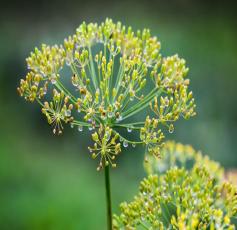
Plant Origin: Austria, Hungary
Extraction Method: Steam distilled from whole plant
Key Constituents: Carvone (30-45%), Limonene (15-25%), Alpha- and Beta-Phellandenes (20-35%).
ORAC: 35,600 µTE/100g
Historical Data: The dill plant is mentioned in the Papyrus of Ebers from Egypt (1550 B.C.). Roman gladiators rubbed their skin with dill before each match. Listed in Dioscorides’ de Materia Medica (A.D.78), Europe’s first authoritive guide to medicines, which became the standard reference work for herbal treatments for over 1,700 years. It was listed in Hildegard’s Medicine, a compilation of early German medicine by highly regarded Benedictine herbalist Hildegard of Bingen (1098-1179)
Medical Properties: Antidiabetic, antispasmodic, antibacterial, expectorant, pancreatic stimulant, insulin/blood sugar regulator
USES: It can be used for diabetes, digestive problems, liver deficiencies.
Fragrant Influence: Calm the autonomic nervous system and, when diffused with Roman chamomile, combats ADHD.
Application: It is recommended to dilute 1 part of essential oil with 1 part V-6 Vegetable Oil Complex or other pure vegetable oil; (1) apply 2-4 drops on location or abdomen, (2) apply on chakras and/or Vita Flex points (3) inhale directly, (4) diffuse, or (5) take as dietary supplement.
Dorado Azul (Hyptis suaveolens)
Botanical Family: Lamiaceae
Plant Origin: Ecuador
Extraction Method: Steam distilled from stems/ leaves/ flowers (aerial parts)
Key Constituents: Alpha-Fenchol (4-12%), Beta-Pinene (7-12%), Bicyclogermacrene (4-8%), Eucalyptol 1,8-Cineole(23-46%), Limonene (3-7%), Sabinene (7-18%)
Historical Data: Until about 2006, dorado azul was recognized in Ecuador as only a weed. It did not even have a botanical name until Gary Young distilled and analyzed it for the first time and gave it its identity. It has a red liquid when distilled, and the natives use it to reverse cancer.
Medical Properties: Anti-inflammatory, antiseptic, antibacterial, respiratory stimulant
USES: Colds, coughs, flu, bronchitis, asthma, allergic reactions that cause constriction and compromised breathing, any compromise to the respiratory tract, hormone balancer, vascular dilator, circulatory stimulant, arthritic and rheumatoid-type pain, reducing candida and other intestinal tract problems, digestion, hygienic action for the mouth, enhances mood.
Application: Dilute 1 part of essential oil with 1 part V-6 Vegetable Oil Complex or other pure vegetable oil; (1) Apply 2-4 drops on location, (2) apply on chakras and/or Vita Flex points, (3) inhale directly, (4) diffuse up to 30 minutes the times daily, or (5) take as dietary supplement 1-10 drops in a capsule or 1-2 drops under the tongue or add to drinking water.
Elemi (Canarium luzonicum)
Botanical Family: Burseraceae (frankincense)
Plant Origin: Philippines
Extraction Method: Steam distilled from the gum/resin of the tree
Key Constituents: Limonene (40-72%), Alpha-Phellandrene (10-24%), Sabinene (3-8%), Elemol (1-25%)
Historical Data: Elemi has been used in Europe for hundreds of years in salves for skin and is included in celebrated healing ointments such as baum paralytique. Used by a 17th century physician , J.J. Wecker on the battle wounds of soldiers, elemi belongs to the same botanical family as frankincense (Boswellia carteri) and myrrh (Commiphora myrrha). The Egyptians used elemi for ambalming, and subsequent cultures (particularly in Europe) used it for skin care and for reducing fine lines, wrinkles, and improving skin tone.
Medical Properties: Antispasmodic, anti-inflammatory, antimicrobial, antiseptic
USES: Muscle/nerve pain, skin problems (scars, acne, wrinkles), can be grounding and used to clear the mind.
Fragrant Influence: Its spicy, incense-like fragrance is very conductive toward meditation. Can be grounding and used to clear mind.
Application: (1) Apply 2-3 drops on location, (2) apply on chakras and/or Vita Flex points, (3) inhale directly, (4) diffuse, or (5) if used as a dietary supplement, put one drop in a capsule and take, or put one drop in 4 fl. oz. of liquid (rice milk, etc.)
Found in: Ortho Sport Massage Oil
Eucalyptus Blue (Eucalyptus bicostata)
Botanical Family: Myrtaceae (myrtle)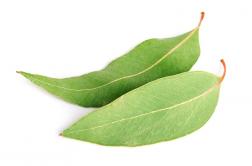
Plant Origin: Eucador
Extraction Method: Steam distilled from the leaves
Key Constituents: Alpha-pinene (9-34%), Aromadendrene (≤ 9.2%), 1,8-Cineole (Eucalyptol)(21-98%), Limonene (4-7%)
Historical Data: Eucalyptus blue is grown and distilled on Young Living’s farm in Eucador. It is called blue gum, a tree that has been crossbred over 250 years in the wilds of the Andean Mountains in Ecuador and is a cross between Ecalyptus citriodora and Eucalyptus globulus. The native people of Eucador have used the disinfecting leaves to cover wounds and repel insects.
Although it contains 56 percent of eucalyptol, because of its balanced chemical constituents within the eucalyptus, it is the only eucalyptus that has been found in the world today that does not cause an allergic reaction in people who have allergies to eucalyptol. Eucalyptus Blue is preferred over many of the eucalyptus species because of its well-balanced chemistry and its non-allergen effect for all types of respiratory conditions. A great companion to dorado azul.
Medical Properties: Expectorant, diaphoretic, insecticidal, oestrogenic, antifungal, antibacterial.
USES: Supports respiratory function to promote normal breathing, releves sore muscles, calming, invigorating
Fragrant Influence: Has a fresh, balanced, invigorating aroma
Application: Dilute 1 part essential oil with 1 part V-6 Vegetable Oil Complex or other pure vegetable oil; (1) apply 2-4 drops on location or abdomen, (2) apply on chakras and/or Vita Flex points, (3) inhale directly, (4) diffuse in diffuser or humidifier.
Caution: Do not use eucalyptus blue as a dietary supplement. Large amount of eucalyptus may be toxic. Keep out of reach of children.
Found in: Breathe Again Roll-On
Eucalyptus Globulus (Eucalyptus globulus)
Botanical Family: Myrtaceae (myrtle)
Plant Origin: China
Extraction Method: Steam distilled from leaves
Key Constituents: 1,8-Cineole(Eucalyptol) (58-80%), Alpha-Pinene (10-22%), Limonene (1-8%), Para-Cymene (1-5%), Trans-Pinocarveol (1-5%), Aromadendrene (1-5%), Globulol (0.5-1.5%)
ORAC: 2,400µTE/100g
Historical Data: For centuries, Australian Aborigines used the disinfecting leaves to cover wounds. Shown by laboratory tests to be a powerful antimicrobial agent, E. globulus contains a high percentage of eucalyptol (a key ingredient in many antiseptic mouth rinses). Often used for respiratory system. Eucalyptus has been investigated for its powerful insect repellent effects (Trigg, 1996). Eucalyptus trees have been planted throughout parts of North Africa to successfully block the spread of malaria. According to Jean Valnet, MD, a solution of 2 percent eucalyptus oil sprayed in the air will kill 70 percent of airborne staph bacteria. Some doctors still use solutions of eucalyptus oil in surgical dressings.
Medical Properties: Expectorant, mucolytic, antimicrobial, antibacterial, antifungal, antiviral, antiaging.
USES: Respiratory/sinus infections, decongestant, rheumatism/arthritis, soothe sore muscles.
Fragrant Influence: Promote health, well-being, purification, and healing.
Application: Dilute 1 part essential oil with 1 part V-6 Vegetable Oil Complex or other pure vegetable oil; (1) apply 2-4 drops on location or abdomen, (2) apply on chakras and/or Vita Flex points, (3) inhale directly, (4) diffuse in diffuser or humidifier, or (5) take as a dietary supplement.
Found in: Dentarome Ultra Toothpaste, Ortho Sport Massage Oil, R.C.
Eucalyptus Radiata (Eucalyptus radiata)
Botanical Family: Myrtaceae (myrtle)
Plant Origin: Australia
Extraction Method: Steam distilled from leaves
Key Constituents: 1,8-Cineole(Eucalyptol) (60-75%), Alpha Terpineol (5-10%), Alpha-Pinene (2-6%), Limonene (4-8%)
Medical Properties: antibacterial, antiviral, expectorant, anti-inflammatory
USES: Respiratory/sinus infections, viral infections, fights Herpes simplex when combined with bergamot.
Application: Dilute 1 part essential oil with 1 part V-6 Vegetable Oil Complex or other pure vegetable oil; (1) apply 2-4 drops on location or abdomen, (2) apply on chakras and/or Vita Flex points, (3) inhale directly, (4) diffuse in diffuser or humidifier.
Found in: AromaGuard Mountain Mist Deodorant, Carbozyme, Dentarome Toothpaste, Raven, R.C., Thieves.
Fennel (Foeniculum vulgare)
Botanical Family: Apiaceae or Umbelliferae (parsley)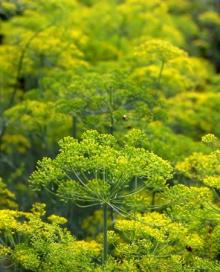
Plant Origin: Hungary
Extraction Method: Steam distilled from the crushed seeds (fruit)
Key Constituents: Trans- Anethol (60-80%), Frenchone + Linalol (12-16%), Alpha-Pinene (3-5%), Methyl Chavicol (2-5%)
ORAC: 238,400 mTE/100g
Historical Data: Believed to ward off evil spirits and to protect against spell cast by witches during medieval times. Springs were hung over doors to fend off evil phantasms. For hundreds of years, fennel seeds have been used as a digestive aid and to balance menstrual cycles. It is mentioned in one of the oldest known medical records, the Eber Papyrus (dating from 16th century B.C.), an ancient Egyptian list of 877 prescriptions and recipes. It was listed in Hildegard’s Medicine, a compilation of early German medicines by highly regarded Benedictine herbalist Hildegard of Bingen (1098 – 1179).
Medical Properties: Antidiabetic, anti-inflammatory, antitumoral, estrogen-like, digestive aid, antiparasitic (worms), antiseptic, antispasmodic, analgesic, increases metabolism.
USES: Diabetes, cancer, obesity, arthritis/rheumatism, urinary tract infection, fluid retention, intestinal parasites, menstrual problems/PMS, digestive problems.
Application: : Dilute 1 part essential oil with 1 part V-6 Vegetable Oil Complex or other pure vegetable oil; (1) apply 2-4 drops on location, (2) apply on chakras and/or Vita Flex points, (3) inhale directly, (4) diffuse, or (5) take as dietary supplement.
Caution: Avoid using if epileptic
Found in: ComforTone, Detoxzyme, Di-Gize, Dragon Time, Essntialzyme, Estro, FemiGen, Juva Flex, Power Meal, Prenolone Plus Body Crteam.
Frankincense (Boswellia carteri)
Botanical Family: Burseraceae (frankincense)
Plant Origin: Somalia
Extraction Method: Steam distilled from gum/resin
Key Constituents: Alpha-Pinene (28-49%), Limonene (10-16%), Sabinene (3-7%), Myrcene (8-12%), Beta Caryophyllene (3-7%), Alpha Thuyene (4-8%), Paracymene (2-5%)
ORAC: 630 mTE/100g
Historical Data: Also known as “olibanum,” the name frankincense is derived from the Medieval French word for “real incense.” Frankincense is considered the “holy anointing oil” in the Middle East has been used in religious ceremonies for thousands of years. It was well known during the time of Christ for its anointing and healing powers and it was one of the gifts given to Christ at His birth. “Used to treat every conceivable ill known to man,” frankincense was valued more than gold during ancient times, and only those with great wealth and abundance possessed it. It is mentioned in one of the oldest known medical records, Ebers Papyrus (dating from 16th B.C.), an ancient Egyptian list of 877 prescription and recipes.
Medical Properties: Antitumoral, immuno-stimulant, antidepressant, muscle relaxing
USES: Depression, cancer, respiratory infections, inflammation, immune-stimulating
Fragrant Influence: Increases spiritual awareness, promotes meditation, improves attitude, and uplifts spirits.
Frankincense contains sesquiterpenes, which stimulate the limbic system of the brain (the center of memory and emotions) and the hypothalamus, pineal, pituitary glands. The hypothalamus is the master gland of the human body, producing many vital hormones including thyroid and growth hormone.
Application: (1) Apply 2-4 drops on location, (2) apply on chakras and/or Vita Flex points, (3) inhale directly, (4) diffuse, (5) when using as a dietary supplement, dilute 1 drop of frankincense in 4 drops V-6 or olive oil, put in a capsule, and take 1 capsule before each meal or as desired.
Frankincense, Sacred (Boswellia sacra)
Botanical Family: Burseraceae (frankincense)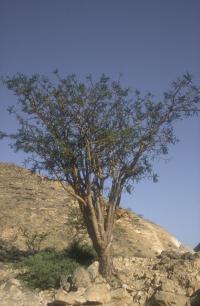
Plant Origin: Oman
Extraction Method: Steam distilled from gum and resin
Key Constituents: Alpha-Pinene (53-90%), Camphene (1-4%), Sabinene (1-7%), Para-cymene (0.4-4%), Limonene (2-7.5%) Historical Data: Young Living’s sacred frankincense oil is the first Omani frankincense to be available to those outside of Saudi royals or the privileged of Oman. It is regarded the world over as the rarest, most sought-after aromatic in existence. After 15 years of research, 15 trips to Oman, and numerous meetings and negotiations with Omani officials, Gary Young was granted the first export permit in the history of Oman for the release and export of the oil and permission to build a Young Living distillery in the country and to export of the resulting essential oil out of Oman. Gary was on-site to supervise the building of Young Livings’ Omani distillery, and Young Living has contracted with local harvesters to secure our supply of Omani resin. This marks the first time any Westerners have been able to experience these unique, spiritual properties. Omani frankincense is highly regarded as the frankincense of ancients and the traditional spiritual oil of the biblical times. Historically, it is believed that this beautiful, white hojari resin produced the frankincense that was taken to the Christ Child. Science continues to document the oil’s immense healing properties, which users of this oil already know.
Medical Benefits: Frankincense has been tested as an anticancer agent for its ability to turn off the DNA of cancer cells and return the DNA to a healthy state. Frankincense oil has also been documented to regenerate disc, cartilage, and bone. Therapeutic-grade frankincense oil contains boswellic acids, which are potent ant-inflammatory agents against rheumatoid arthritis and osteoporosis.
Traditional USES: Supports skin health and treats stomach disorders, ulcers, cancer, dental and gum diseases, bad blood, infections, mental disorders, and insect bites. It is calming, meditative, relaxing, and promotes higher states nof spiritual awareness and higher levels of consciousness and sensitivity.
Application: Dilution is not required except for the most sensitive skin; (1) Apply 2-4 drops on location, (2) apply on chakras and/or Vita Flex points, (3) inhale directly, (4) diffuse up to 1 hour three times daily, or (5) take as dietary supplement; put 2 drops in a capsule and take three times daily or as needed or put 1-2 drops in water and drink.
Galbanum (Ferula gummosa)
Botanical Family: Apiaceae or Umbelliferae
Plant Origin: Iran
Extraction Method: Steam distilled gum/resin derived from stems and branches
Key Constituents: Alpha-Pinene (5-21%), Beta-Pinene (40-70%), Delta-3-Carene (2-16%), Myrcene (2.5-3.5%), Sabinene (0.3-3%)
ORAC: 26,200 mTE/100g
Historical Data: Mentioned in Egyptian papyri and the Old Testament (Exodus 30:34), it was esteemed for its medicinal and spiritual properties. Dioscorides, an ancient Roman historian, records that galbanum was used for its antispasmodic, diuretic, and pain-relieving properties.
Medical Properties: Antiseptic, analgesic, and light antispasmodic, anti-inflammatory, circulatory stimulant anticonvulsant.
USES: Digestive problems (diarrhea), nervous tension, rheumatism, skin conditions
Fragrant Influence: Harmonic and balancing, amplifies spiritual awareness and meditation. When combined with frankincense or sandalwood, the frequency rises dramatically.
Application: Dietary Supplement: Dilute 1 part galbanum with 1 part vegetable oil, put in a capsule, and take up to three times daily or as needed; (1) Apply 2-4 drops on location, (2) apply on chakras and/or Vita Flex points, (3) inhale directly, (4) diffuse up to 1 hour three times daily, or (5) take as dietary supplement.
Found in: Exodus II, Gathering, Gratitude, Highest Potential.
Geranium (Pelargonium gaveolens)
Botanical Family: Geraniaceae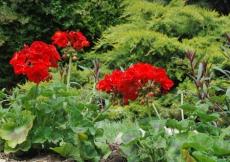
Plant Origin: Egypt, India
Extraction Method: Steam distilled from the flowers and leaves
Key Constituents: Citronellol + Nerol (35-50%), Citronnellyl Formate (9-15%), Geraniol (5-10%), 6,9-Guaiade (4-8%), Isomenthone (4-8%)
Historical Data: Geranium has been used fro centuries for regenerating and healing skin conditions.
Medical Properties: Antispasmodic, antioxidant, antitumoral, anti-inflammatory, hemostatic (stop bleeding), antibacterial, antifungal, improves blood flow, liver and pancreas stimulant, dilates bile ducts for liver detoxification, helps cleanse oily skin; revitalizes skin cells.
USES: Hepatitis/fatty liver (Jean Valnet, MD), skin conditions (dermatitis, eczema, psoriasis, acne, vitiligo), fungal infections (ringworm), viral infections (Herpes, shingles), hormone imbalances, circulatory problems (improves blood flow), menstrual problems/PMS.
Fragrant Influence: Helps release negative memories and eases nervous tension. It balances the emotions, lifts the spirit, and fosters peace, well-being, and hope.
Application: Apply 2-4 drops on location, (2) apply on chakras and/or Vita Flex points, (3) inhale directly, (4) diffuse, or (5) when using as a dietary supplement, dilute 1 drop of geranium in 4 drops V-6 or olive oil, put in a capsule, and take 1 capsule before each meal or as desired.
Found in: Acceptance, Release, Trauma Life, White Angelica.
